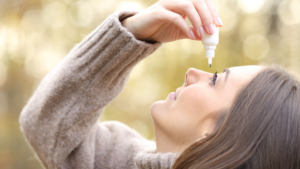Now is a great time to get a head start on your New Year’s resolution! What better way to care for your health than starting with your eyes? Scheduling a visit to your optometrist for an annual comprehensive eye exam is even a perfect way to utilize any Health Savings Account (HSA) or Flexible Spending Account (FSA) money you might still have for the year. Talk about killing two birds with one stone! You’ll be able to start the year with crystal clear vision, looking stylish, and having the confidence that your all-over health is in check and all your benefits are used.
Keep your overall health in check
Did you know that optometrists can diagnose over 270 different diseases? The eyes are truly the window to your health. Not only can optometrists help to correct your vision with glasses or contacts, but they will also give you the confidence that your health is moving in the right direction. This is a perfect way to utilize your health benefits before the year-end deadline!
Don’t forget about the rest of the family!
You might think that kids who have received vision exams at school or a pediatrician are totally in the clear with their eye health. However, the fact is that they still should receive a comprehensive eye exam from an optometrist to ensure that more than just their sight is being managed and that no underlying conditions were missed in the initial vision exam. Babies should also be receiving comprehensive eye exams. The InfantSEE program allows participating doctors of optometry to provide a comprehensive infant eye assessment between 6 and 12 months of age free of charge regardless of family income or access to insurance coverage. This means that all Colorado infants qualify for a no-cost comprehensive eye exam at 6-12 months of age. To schedule, simply find your local participating InfantSEE optometrist and schedule.
Correct and protect your vision in style
HSA and FSA funds can be used at your optometrist’s office to purchase new stylish glasses. You could even consider buying a few different pairs to really express all the different angles of your personality while ensuring that you are able to see the world clearly! Sunglasses with or with prescriptions can also be purchased with your benefit funds. Sunglasses are the perfect fashion accessory to protect your eyes from harmful UV rays all year round.
Stock up to see clearly
If you are a contact lens wearer, consider using your benefits to purchase a year’s supply! Set yourself up for success by ensuring that you don’t run out of your prescription lenses when you need them the most. HSA and FSA funds can be used on your corrective contact lenses. Of course, don’t forget about the rest of the family.
Prioritize eye health this year!
The end of the year is the perfect time to use your health benefits before they expire. This will help you be proactive in your eye health and can ensure early diagnosis and proper care for you and your whole family – a perfect way to begin the new year! If you are in need of an optometrist, you can find one near you to schedule an appointment!

Kick Start Your New Year’s Resolution with Your Eye Health!
November 4, 2024
No Comments
Now is a great time to get a head start on your New Year’s resolution! What better way to care for your health than starting

Vision Awareness Patch Program
September 17, 2024
No Comments
Girl Scout leaders have you heard? There is now an eye health patch that your Girl Scout troop can earn! The Colorado Optometric Association and

Eye Health and Sport Safety
May 7, 2024
No Comments
Summer is nearly here, and kids are excited to go out and play! But with this we need to ensure that their eyes and vision

Are Your Eyes Ready for the Upcoming Total Solar Eclipse?
March 6, 2024
No Comments
A total solar eclipse¹ will cross the United States on April 4, 2024, passing over Texas, and traveling through Oklahoma, Arkansas, Missouri, Illinois, Kentucky, Indiana, Ohio,

The Time Has Come to Use Your Health Benefits!
November 6, 2023
No Comments
Have you made good use of your health benefits this year? If not, consider using your Health Savings Accounts (HSA) or Flexible Spending Accounts (FSA)

Winter is Coming – So Are Dry Eyes
October 5, 2023
No Comments
Brace yourselves, winter is coming and so are dry eyes! Winter weather conditions are one of the leading causes for dry eye symptoms. This is